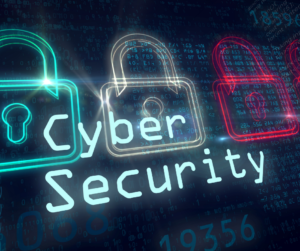 If you are concerned about your cyber security – and you should be – it’s essential to know the biggest threats to you right now. So, what is cyber security anyway? And how can you protect yourself?
If you are concerned about your cyber security – and you should be – it’s essential to know the biggest threats to you right now. So, what is cyber security anyway? And how can you protect yourself?
Cyber security is the practice of defending computers, servers, mobile devices, electronic systems, networks, and data from malicious attacks. Global cyber threat continues to increase at a rapid pace. Most, but not all, cybercrime is committed by hackers who want to make money. As the result of the COVID-19 pandemic, Cybercrime, which includes everything from embezzlement to data hacking and destruction, is up 600%.
Types of Cyber Threats:
Malware, short for “malicious software”, refers to any intrusive software developed by cybercriminals or hackers to steal data and damage computers and computer systems. Malware is often activated when a user clicks on a malicious link or attachment, which leads to installing dangerous software. There are several types of malware:
- Virus: A self-replicating program that attaches itself to clean files and spreads throughout a computer system, infecting files with malicious code.
- Trojans: A type of malware that conceals its true content to fool a user into thinking it’s a harmless file. Cybercriminals trick users into uploading Trojans onto their computer where they can collect data or cause damage.
- Worms: Malicious software that spreads copies of itself from computer to computer within a network. Worms exploit vulnerabilities in your security software to steal sensitive information and corrupt files. A worm is different from a virus, however, because a worm can operate on its own while a virus needs a host computer.
- Spyware: A program that secretly records what a user does, so that cybercriminals can make use of this information. Spyware is often used to steal personal or financial information.
- Ransomware: Malicious software which locks down a user’s files and data with the threat of erasing it unless a ransom is paid.
- Adware: Unwanted software that displays advertisements on your screen. Adware collects personal information from you to serve you with personalized ads. While adware is not always dangerous, it can redirect your browser to unsafe sites and can even contain Trojans and spyware.
- Rootkits: Malicious software that is extremely difficult to spot and also very hard to remove. A rootkit allows someone to maintain control over a computer without the computer owner knowing about it. Once a rootkit has been installed, nothing on your computer is secure.
Where does malware come from?
The most common sources of malware are malicious websites, email attachments, and shared networks.
- Phishing: E-mails that appear to be from a legitimate company asking for sensitive information. Phishing attacks are often used to trick people into handing over personal information or credit card data.
- Shared Networks: A malware infected computer on your shared network can spread malware onto all devices on the network.
- Malicious Websites: Some websites may install malware onto your computer – usually through advertisements on popular sites (malvertising) or malicious links.
How to Prevent Malware – 7 Things You Should Start Doing Now:
- Install Anti-virus Software: Anti-virus software will scan your computer to detect and clean the malware and provide enhanced protection against newly created viruses.
- Regularly Update Software: Keep your software updated to stop attackers gaining access to your computer through vulnerabilities in outdated systems.
- Install a Firewall: A firewall blocks all unauthorized access to or from a private computer network.
- Use Secure Authentication Methods: Use strong passwords with at least 8 characters, including an uppercase letter, a lowercase letter, and a number or symbol. You should also enable multi-factor authentication, such as a security question in addition to a password.
- Don’t Open Emails From Unknown Sources: Hackers often send emails with links that are sure to send malware your way and hack into your important information. It is better to delete the email than to suffer the consequences of opening it.
- Avoid Using Unsecure WiFi Networks in Public Places: On an unsecure network, a cybercriminal can intercept communication between two individuals to steal data.
- Maintain Regular Backups of Your Data: Backups do not secure your network from attacks but they help when you face a malware attack.
Jeh Johnson, former U.S. Secretary of Homeland Security, stated “Cyberattacks of all manner and from multiple sources are going to get worse before they get better. In this realm and at this moment, those on offense have the upper hand. Whether it’s cyber-criminals, hacktivists, or nation-state actors, those on offense are ingenious, tenacious, agile, and getting better all the time. Those on defense struggle to keep up.”
It is imperative that you protect yourself and your family from cybercriminals. With technology increasing, criminals don’t have to rob stores or banks, nor do they have to be outside to commit a crime – they have everything they need on their lap. Their weapons are no longer guns, they attack with a computer mouse and passwords.



